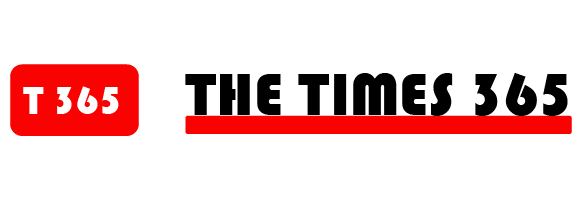Most of us are on autopilot with our money. It keeps us aloft, if only just off the ground.
What attention we pay to our finances is mostly just fruitless worrying, not constructive action. But overhauling your finances is downright daunting. Where do you even begin?
Glad you asked! Below is a simple one-week plan. If you spend 30 minutes a day on the following mini-projects for the next week, you will end up in much better financial shape than when you started.
No advance degree is required, just a half hour a day for seven days. Give it a try and see just how much headway you can make in a week!
Day 1: Give Your Credit a Checkup
When was the last time you pulled your own credit report? Probably too long ago.
Start by going to AnnualCreditReport.com or a similar site and pulling your free credit report. It won’t ding your score, don’t worry. Americans are guaranteed a free credit report every year by law.
Look over your report carefully. In particular, look for any late payments in your history. Are any of them in error? Contact the credit bureaus to dispute false data.
If you see late payments that are not errors, set up automatic payments to those accounts moving forward so it never happens again.
Lastly, if you want to keep a close eye on your credit moving forward, consider signing up for credit monitoring on a site like CreditKarma.

Related: The 3 Critical Elements of Human Happiness (& Why Unlimited Money Isn’t Enough)
Day 2: Audit Your Credit Cards
There’s a fun part of this—and a not-so-fun part. We’ll start with the not-so-fun part first (of course).
Do any of your credit cards have balances over 30 percent of the card limit? Using more than 30 percent of a credit card’s limit starts damaging your credit, and it gets worse the higher proportion that you use.
Create a plan for paying down your credit card debt (start with these four steps). You should ideally be paying off your credit card balances every month—credit card debt is extremely expensive. Sure, there are exceptions, such as if you use credit cards to buy real estate, but as a general rule, aim to pay off your credit card every month to avoid hefty finance charges.
Now for the fun part. Do you have any credit card rewards that you’ve earned but haven’t spent? How much? Where are they held? How can you spend them in a productive way?
That latter is trickier than it sounds. Don’t just go blow your rewards on a shopping spree. Look for items that you would otherwise have spent your own money on, and pay them with reward points instead.
Lastly, are you using high-cost, low-reward credit cards? Maybe it’s time to shift to a lower-cost, higher-reward card. NerdWallet periodically publishes good summaries on these. Check ‘em out. Don’t cancel your old cards; just pay them off and only use them occasionally. Leave them at home in your bedside drawer for an emergency.
Day 3: Switch to a Lower Cost Cell Phone Plan
According to MoneySavingPro.com, the average monthly cell phone bill for Americans is $80—or nearly a grand a year. If you use one of the four “big brand” cell phone carriers—Sprint, Verizon, AT&T, T-Mobile—you’re probably paying even more.
Here’s a not-so-private secret: the smaller-name carriers simply pay a usage fee to the big brand carriers to access their networks. They charge a quarter of the price for the same network service. Why? Because the big name companies spend massive amounts on advertising campaigns to build their brand name. Don’t fall for it.
Find a company that lets you swap out sim cards and use unlocked phones. Spend $35/month and use whatever phone you want, instead of way more on a phone artificially locked to one carrier.
Day 4: Ditch Your Subscriptions
Companies love the subscription sales model. They only have to convert customers once, and they keep making money from them every month!
Break the cycle. Look over your monthly spending and highlight all subscriptions in red. Which ones do you actually use every day? Every week? Every month?
Classic example: gym memberships. They cost from $40 to over $100/month, yet a study published by Statistic Brain showed a shocking 63 percent of members never even go to the gym.
Ready for an idea you won’t like? Cancel your cable subscription, and start actually using that gym subscription. But if that’s just not going to happen, then cancel the gym membership, too, so you’re not wasting money on a service you’re not using.
Keep your monthly statements handy—you’ll need them tomorrow.
Day 5: Review (or Create) Your Monthly Budget
Do you have a firm monthly budget? Most people have only the loosest of budgets. It’s why a third of Americans have no savings, and another third have less than $1,000.
If you want your budget to work, the first thing you need to do is make sure that saving is your first priority—the first “bill” paid on every payday. Most people make saving their last priority (whatever happens to be left at the end of the month).
Reverse that pecking order. Set up automatic transfers from your checking account to your savings account, to take place every time you get paid—on the same day you get paid.
While you’re at it, create an account on Mint.com or another financial aggregation service if you don’t have one. It makes a huge difference to be able to see all of your accounts, in one place, on one dashboard. Your net worth suddenly becomes a real, living, breathing entity, rather than an abstraction.

Related: 12 Sneaky Habits That Kill Your Budget in the Night
Day 6: Back Up Your Important Documents
First and foremost, pull out your wallet and your smartphone. Take everything out of your wallet and photograph it with your phone. Save those photos on your computer, in a safe place, because you never know when you and your wallet will be parted.
Speaking of your computer, is your most important data backed up? No, I’m not proposing you go out and buy another subscription service after all the haranguing about them above. Download Google Drive’s desktop app to your computer, and set it to sync your most important folders to Google Drive’s online cloud storage.
Wrap it up by buying a portable fireproof safe for your most important physical documents, such as the deeds to your home and any investment properties. The title to your car. Your Social Security card. Your passport. Anything else that is difficult or expensive to replace should go in the safe, and the safe needs to go somewhere equally, well, safe.
Day 7: Reevaluate Your Retirement (and Consider Adding Rentals)
At your current retirement savings rate, when could you retire?
OK, OK, that was a bit of a trick question—or at least a tricky question.
First, do you have a target for your nest egg? If not, set one. And remember, this is based on your spending, not on your current income (big difference—at least it should be).
Next, keep in mind that your nest egg is only part of the equation. Retirement is more about ongoing, reliable income than it is about a lump sum figure on a balance sheet. Rental properties can be an excellent source of income and can change the math dramatically for how much you need to retire. They are investments optimized for yield that can adjust for inflation, over which the investor has much greater control than they do over some distant corporation.
Retirees typically have to sell off parts of their stock portfolio each year, drawing down the total value. Rental properties only increase in value over time, even as the mortgages debt draws down toward zero.
Take your new-and-improved budget from a few days ago and consider making it even more aggressive. With lean spending and heavy saving and investing, you can turbocharge your retirement investments.
Feel better about your finances? Good. Now keep your momentum moving forward, and accelerate your investing!
What’s your plan for financial growth? What have you had success with? Have any quick exercises that were a big help to you to add to this list?
We’d love to hear about them below!
Note By BiggerPockets: These are opinions written by the author and do not necessarily represent the opinions of BiggerPockets.







